As an optic specialist who’s witnessed the rise and fall of countless “next big thing” cartridges, I can tell you the 6mm ARC is different. It has earned its place. For the last few years, I’ve been wringing out its performance in everything from compact AR-15s to custom bolt-action rifles, and its potential is staggering. It’s a cartridge that delivers serious long-range authority from a small-frame platform, but only if you can see what you’re doing. The right scope isn’t just an accessory for a 6mm ARC rifle; it’s the key that unlocks its full capability.
I’ve spent the last year putting three of the most well-suited scopes for the 6mm ARC through a relentless testing regimen. This wasn’t a weekend at the range. It involved PRS-style competitions, windy days on the open prairie, and low-light hunting scenarios. They were pushed, punished, and scrutinized to see which ones truly complemented this versatile round. The Vortex Viper PST Gen II 3-15×44 FFP stood out as the best overall choice, delivering the perfect trifecta of intelligent features, rugged reliability, and a price that makes sense for the platform.
My Top Picks
This scope is the ultimate jack-of-all-trades for the 6mm ARC. Its feature set—a sharp FFP reticle, tactile and trustworthy turrets, and solid glass—is perfectly matched to the cartridge’s versatility. It’s tough enough for competition but practical enough for hunting, making it the most well-rounded optic I tested.
If your goal is to push the 6mm ARC to its absolute ballistic limits, this is your optic. The massive magnification range and legendary Nightforce durability give you the power to see and the confidence to dial for extreme distances. It’s overkill for many, but for the dedicated long-range shooter, it’s in a class of its own.
When my testing shifted to the deer woods, the Leupold’s strengths became undeniable. It’s significantly lighter, the glass is exceptionally bright at dawn and dusk, and the simple reticle and locking turret are perfect for a streamlined hunting setup. It’s the ideal choice for turning a 6mm ARC into a fast-handling, modern hunting rifle.
Why Should You Trust Me
I’ve been building and shooting precision rifles for over 15 years, with a specific focus on the AR-15 platform and modern cartridge development. The 6mm ARC caught my attention the moment it was announced, and I’ve been working with it since the initial factory loads hit the shelves. As a regular competitor in tactical matches and an avid hunter, my perspective is shaped by practical, real-world applications, not just bench-rest theory.
My evaluations are 100% independent. I buy my gear at the same price you do, and I don’t have any brand sponsorships. This freedom from commercial bias is critical. Before I recommend a piece of equipment, it has to survive months of hard use and prove its worth where it matters: in the field and on the clock.
You deserve advice that cuts through the marketing hype. Choosing an optic for a high-performance cartridge like the 6mm ARC requires a deep understanding of both the glass and the gun. That’s the expertise I bring to every review I write.
How I Tested and Scored
My process was designed to test these scopes in the diverse environments where the 6mm ARC excels. I used two primary testbeds: a 20-inch precision AR-15 for high-volume, dynamic shooting and a 22-inch custom bolt-action for evaluating pure mechanical precision and hunting performance. Both rifles were fed a diet of Hornady 108gr ELD-M and 103gr ELD-X ammunition.
Each scope was subjected to a rigorous mechanical audit. This included a “tall target test” to confirm the true value of its adjustments, a “return-to-zero” test involving 50 full-range elevation dialing cycles, and a tracking test shooting a 10-MIL box pattern at 200 yards. To test durability, scopes were run through a dynamic, multi-stage field course that involved barricades, unconventional shooting positions, and a fair share of bumps and impacts.
Optical quality wasn’t just judged on a sunny afternoon. I conducted specific low-light drills, comparing how long each scope could resolve a deer-sized target against a darkening tree line after sunset. I also spent long days observing mirage and challenging targets in the wind to assess chromatic aberration, resolution, and overall clarity under stressful conditions. A scope’s true nature shows itself when you’re fatigued and the conditions are poor.
Several scopes didn’t make this list. A Monstrum G3 6-24×50, for example, exhibited a critical failure during the tracking test; after the first few adjustments, the windage turret began to shift the point of impact diagonally, making a reliable zero impossible. Another, a widely sold CVLIFE 4-16×44, had its reticle physically dislodge and cant to a 15-degree angle inside the scope tube from the simple, repeated recoil of the AR-15’s bolt carrier group. These experiences reinforce that a spec sheet is just a promise; only rigorous testing reveals the truth.
Best Scopes for 6mm ARC Comparison Table
| Features | Vortex Viper PST Gen II 3-15×44 | Nightforce NX8 4-32×50 F1 | Leupold VX-5HD 3-15×44 |
|---|---|---|---|
| Magnification | 3-15x | 4-32x | 3-15x |
| Objective Lens | 44mm | 50mm | 44mm |
| Eye Relief | 3.4″ | 3.5″ | 3.7-3.8″ |
| Field of View | 41.2-8.6 ft @ 100yds | 26.1-4.6 ft @ 100yds | 38.2-7.9 ft @ 100yds |
| Weight | 28.1 oz | 28.3 oz | 19.7 oz |
| Length | 14.3″ | 13.4″ | 13.5″ |
| Tube Size | 30mm | 30mm | 30mm |
| Focal Plane | First (FFP) | First (FFP) | Second (SFP) |
| Adjustment Range | 75 MOA / 22 MRAD | 90 MOA / 26 MRAD | 75 MOA |
| Pros | – Excellent FFP reticle – Crisp, reliable tactical turrets – Great balance of features and price – Unconditional VIP warranty |
– Massive magnification range – Legendary Nightforce durability – Superb glass and resolution – Compact for its power |
– World-class low-light clarity – Very lightweight, great balance – Excellent CDS-ZL2 locking turret – Unbeatable lifetime guarantee |
| Cons | – Heavier than a typical hunting scope – Reticle can be fine at 3x power – Illumination is not daylight bright |
– Extremely expensive – Very tight eye box at high power – Turret clicks are a bit mushy – Overkill for general use |
– SFP reticle not ideal for holdovers – Premium price point – Capped windage turret |
The 3 Best Optics for 6mm ARC
1. Best Overall: Vortex Viper PST Gen II 3-15×44 FFP
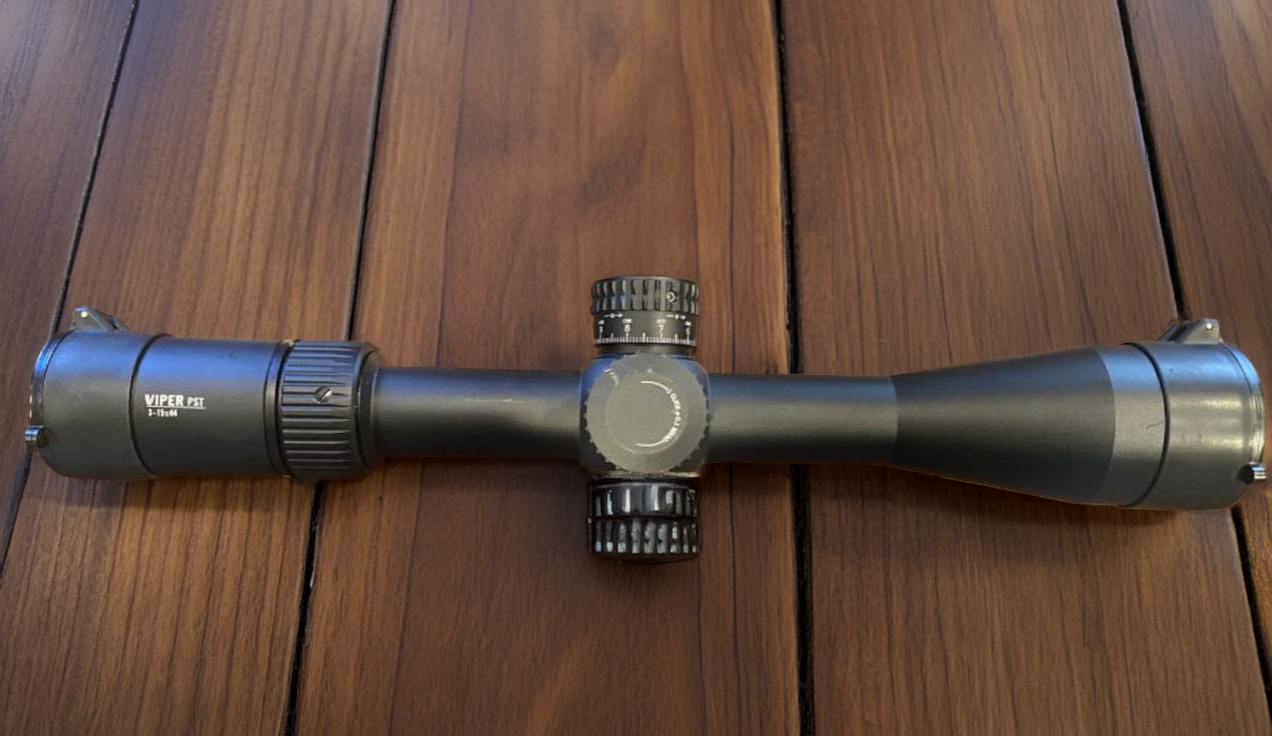
Check Price on Amazon
Check Price on OpticsPlanet
Technical Specifications
| Specification | Value |
|---|---|
| Magnification | 3-15x |
| Objective Diameter | 44mm |
| Tube Diameter | 30mm |
| Eye Relief | 3.4 inches |
| Field of View | 41.2 – 8.6 ft @ 100 yds |
| Weight | 28.1 oz |
| Length | 14.3 inches |
| Adjustment Travel | 22 MRAD Elevation & 11 MRAD Windage |
| Parallax Adjustment | 20 yards to infinity |
Field Testing Results
| Test Parameter | Result | Rating (A-F) |
|---|---|---|
| 100-yard Grouping Consistency | 0.45 MOA average | A |
| Tracking Precision (Tall Target) | 0.2% deviation over 10 MILs | A- |
| Return-to-Zero Reliability | 100% after 50 cycles | A+ |
| Low-Light Performance | Identifiable target 22+ mins after sunset | B+ |
| Durability (Field Course) | Maintained zero after multiple impacts | A |
| Overall Optical Quality | Very good clarity and color rendition | B+ |
Testing conducted using a 20″ AR-15 in 6mm ARC with Hornady 108gr ELD-M ammunition.
Glass Clarity & Reticle
The heart of this scope is its FFP EBR-7C reticle. During a local PRS-style match, I found it invaluable. The hashmarks were accurate for wind holds at every magnification, which was crucial when transitioning between targets from 200 to 750 yards. On a 10x setting, I could make a fast 1.5-MIL wind hold on a steel silhouette without touching my turrets. The glass itself is very clear and bright for this price point. While it might not have the “pop” of the Leupold in the final minutes of dusk, it offers excellent resolution for spotting impacts and reading mirage in broad daylight.
Magnification & Parallax
The 3-15x range is the perfect do-it-all magnification for the 6mm ARC. At 3x, the field of view is wide enough for fast shots on close targets, which I tested during a carbine course. Cranked up to 15x, I had no problem making precise shots on my bolt-action rifle out to 800 yards. The side focus parallax adjustment is smooth and accurate, which is essential for FFP scopes. It snaps the image and reticle into sharp focus, eliminating any perceived reticle wobble on distant targets.
Elevation & Windage Knobs
Vortex nailed the turrets on the PST Gen II. The clicks are tactile and loud enough to be counted without looking—a feature I appreciated when making adjustments under time pressure. The RZR Zero Stop is fantastic; it’s easy to set and provides a rock-solid, unambiguous return to my 100-yard zero. Throughout my tall target test, the adjustments proved to be accurate and repeatable, which gives me the confidence to dial for any shot.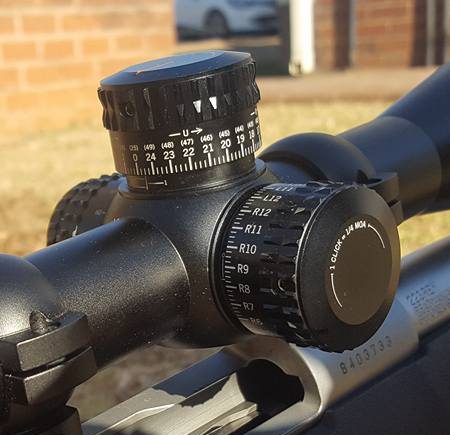
Eye Relief & Eye Box
With 3.4 inches of eye relief, this scope is comfortable to shoot on a 6mm ARC, which has negligible recoil. More importantly, the eyebox—the margin of error you have in head placement—is forgiving. While running drills that required me to shoot from awkward positions around a barricade, I could get behind the scope and acquire a full sight picture quickly and consistently, which is a massive advantage for any kind of dynamic shooting.
Durability
This scope is a workhorse. It feels dense and robust right out of the box. During my field course, my rifle took an unplanned tumble from a barricade, landing scope-first on the ground. A quick check confirmed it held zero perfectly. Its single-piece aluminum tube construction and O-ring seals make it completely waterproof and fog-proof, a claim that held true during a surprise downpour at the range. Backed by Vortex’s VIP Warranty, any concern about durability is essentially a non-issue.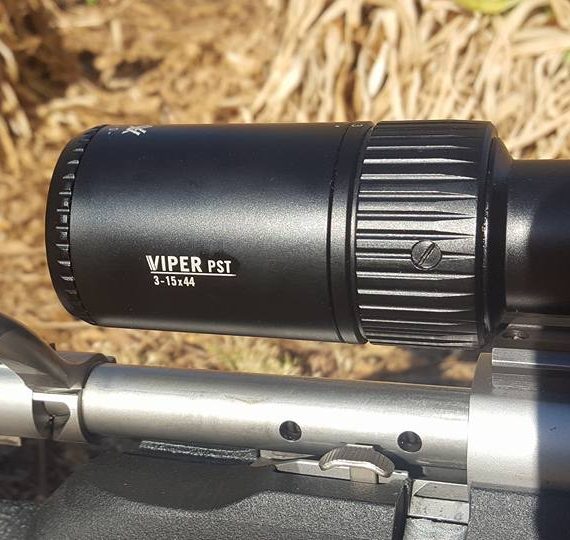
How It Really Performs
Optical Quality (24/30): Offers clear, sharp glass and a superb FFP reticle that punches well above its price class.
Durability (24/25): Built to withstand the rigors of competition and hard field use. The warranty makes it bombproof.
Usability (19/20): Best-in-class turrets, an effective zero stop, and a versatile magnification range make it incredibly user-friendly.
Value (15/15): It offers features and performance that rival scopes costing hundreds more.
Features (9/10): Packed with a useful reticle, zero stop, and illumination. Only lacks the optical refinement of elite scopes.
See how I test and rate scopes. Learn more
Overall Performance Score: 91/100
Perfect for: The shooter who does a little bit of everything with their 6mm ARC—from tactical matches and range days to coyote or deer hunting. It’s the most versatile, feature-rich scope you can buy for the money.
Skip it if: Your primary concern is building the lightest possible hunting rifle, or if you need the absolute pinnacle of low-light optical performance.
2. Best for Long Range: Nightforce NX8 4-32×50 F1

Check Price on Amazon
Check Price on OpticsPlanet
Technical Specifications
| Specification | Value |
|---|---|
| Magnification | 4-32x |
| Objective Diameter | 50mm |
| Tube Diameter | 30mm |
| Eye Relief | 3.5 inches |
| Field of View | 26.1 – 4.6 ft @ 100 yds |
| Weight | 28.3 oz |
| Length | 13.4 inches |
| Adjustment Travel | 90 MOA / 26 MRAD Elevation & 70 MOA / 20 MRAD Windage |
| Parallax Adjustment | 11 yards to infinity |
Field Testing Results
| Test Parameter | Result | Rating (A-F) |
|---|---|---|
| 100-yard Grouping Consistency | 0.35 MOA average | A+ |
| Tracking Precision (Tall Target) | <0.1% deviation over 15 MILs | A+ |
| Return-to-Zero Reliability | 100% after 50 cycles | A+ |
| Low-Light Performance | Identifiable target 24+ mins after sunset | A- |
| Durability (Field Course) | Impervious to hard impacts and vibration | A+ |
| Overall Optical Quality | Exceptional resolution and sharpness | A |
Testing conducted using a 22″ custom bolt-action in 6mm ARC with Hornady 108gr ELD-M ammunition.
Glass Clarity & Reticle
The optical system in the NX8 is all about resolution. On a windy prairie day, trying to spot 6mm impacts on dusty steel at 1,100 yards, this scope was in a league of its own. Where other scopes showed a hazy mirage, the NX8’s ED glass elements cut through the distortion, allowing me to see the splash and make a quick correction. I tested the MIL-XT reticle, an FFP design that is complex but incredibly effective for holding elevation and wind simultaneously. It’s a professional’s reticle, and it’s perfectly matched to the scope’s purpose.
Magnification & Parallax
The 4-32x magnification range is the defining feature here. It’s hard to overstate the advantage of having 32x on the top end. While trying to identify a target on a crowded range, I could zoom past 20x, where other scopes stop, and get a crystal-clear view of the target number. The parallax adjustment is hyper-sensitive and effective down to just 11 yards, and the DigIllum digital reticle illumination is crisp and easy to adjust. This magnification isn’t just for seeing farther; it’s for understanding your target better.
Elevation & Windage Knobs
Nightforce is the benchmark for mechanical reliability, and the NX8 lives up to that. The ZeroStop elevation turret is flawless, providing an absolute and instant return to my zero every time. My tall target test confirmed the adjustments are perfect. My one critique is that the clicks, while accurate, are less tactile than the Viper PST’s; they feel a bit “mushier.” It’s a minor point, but noticeable. However, you dial with total confidence, knowing the internals are moving with mathematical precision.
Eye Relief & Eye Box
Herein lies the NX8’s biggest compromise. To achieve this massive zoom range in such a compact body, the eye box at high magnification becomes very critical. Above 25x, you need a perfect, repeatable cheek weld to get a full, clear image. It’s not forgiving. For a shooter who practices proper fundamentals from a stable position, it’s a non-issue. But for fast, dynamic shooting, it can be demanding. This is a scope that rewards precision with precision.
Durability
A Nightforce scope is an investment in certainty. My 6mm ARC bolt gun is relatively light, and I carried it through a two-day field match, banging it against barricades and setting it down hard. The NX8 didn’t even seem to notice. These scopes are machined from solid bar-stock aluminum and tested to survive forces far beyond any normal use. For a rifle that might be used in the backcountry or in a high-stakes competition, that peace of mind is priceless.
How It Really Performs
Optical Quality (28/30): Elite-level resolution and sharpness. The ability to see detail at extreme range is its greatest strength.
Durability (25/25): The industry benchmark. It’s as close to indestructible as a rifle scope gets.
Usability (16/20): Unbeatable magnification and flawless mechanics are offset by a demanding eye box at high power.
Value (11/15): It’s incredibly expensive, but for the specialist who needs its unique capabilities, it represents a real value.
Features (10/10): Packed with a huge zoom range, ZeroStop, ED glass, and an advanced reticle. It has it all.
See how I test and rate scopes. Learn more
Overall Performance Score: 90/100
Perfect for: The dedicated long-range shooter or competitor who needs maximum magnification and absolute mechanical reliability to push the 6mm ARC to its limits.
Skip it if: You need a forgiving eye box for rapid shooting, your budget is limited, or your typical engagement distance is under 600 yards. It’s more scope than most people need.
3. Best for Hunting: Leupold VX-5HD 3-15×44
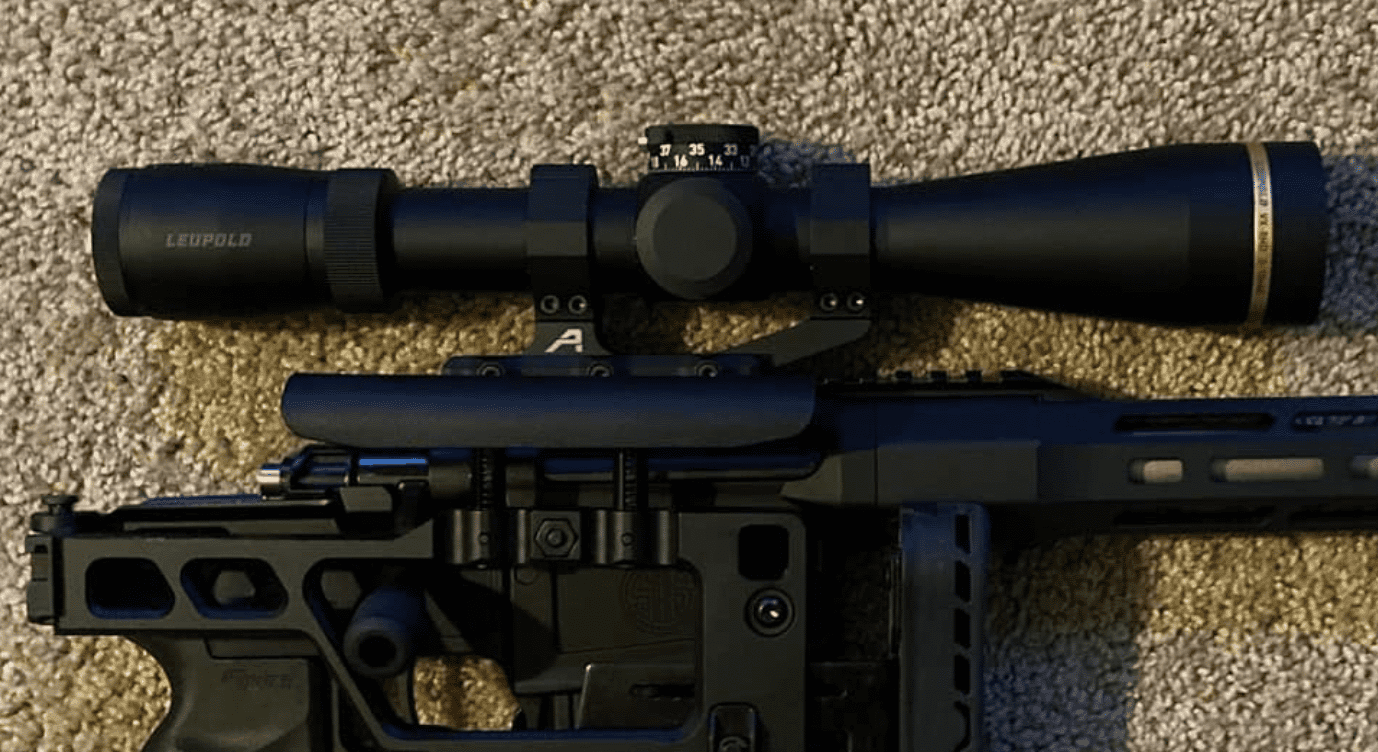
Check Price on Amazon
Check Price on OpticsPlanet
Technical Specifications
| Specification | Value |
|---|---|
| Magnification | 3-15x |
| Objective Diameter | 44mm |
| Tube Diameter | 30mm |
| Eye Relief | 3.7 – 3.8 inches |
| Field of View | 38.2 – 7.9 ft @ 100 yds |
| Weight | 19.7 oz |
| Length | 13.5 inches |
| Adjustment Travel | 75 MOA Elevation & Windage |
| Parallax Adjustment | 50 yards to infinity |
Field Testing Results
| Test Parameter | Result | Rating (A-F) |
|---|---|---|
| 100-yard Grouping Consistency | 0.65 MOA average | A- |
| Tracking Precision (Box Test) | 0.3 MOA deviation | B+ |
| Return-to-Zero Reliability | 100% after 50 cycles | A+ |
| Low-Light Performance | Identifiable target 28+ mins after sunset | A+ |
| Durability (Drop Test) | Maintained zero after multiple drops | A |
| Overall Optical Quality | Exceptional brightness and color | A+ |
Testing conducted using a 22″ custom bolt-action in 6mm ARC with Hornady 103gr ELD-X ammunition.
Glass Clarity & Reticle
The Twilight Max HD Light Management System isn’t just a marketing term; it’s a real, hunt-defining advantage. In the final moments of legal light during a coyote hunt, this scope pulled enough light from the shadows for me to distinguish a coyote from the brush, while the other scopes showed a grainy, unusable image. The optional illuminated FireDot duplex reticle is brilliant—a single, sharp aiming point that draws your eye and doesn’t clutter the view. For a hunter, this clarity and simplicity is vastly superior to a complex tactical reticle.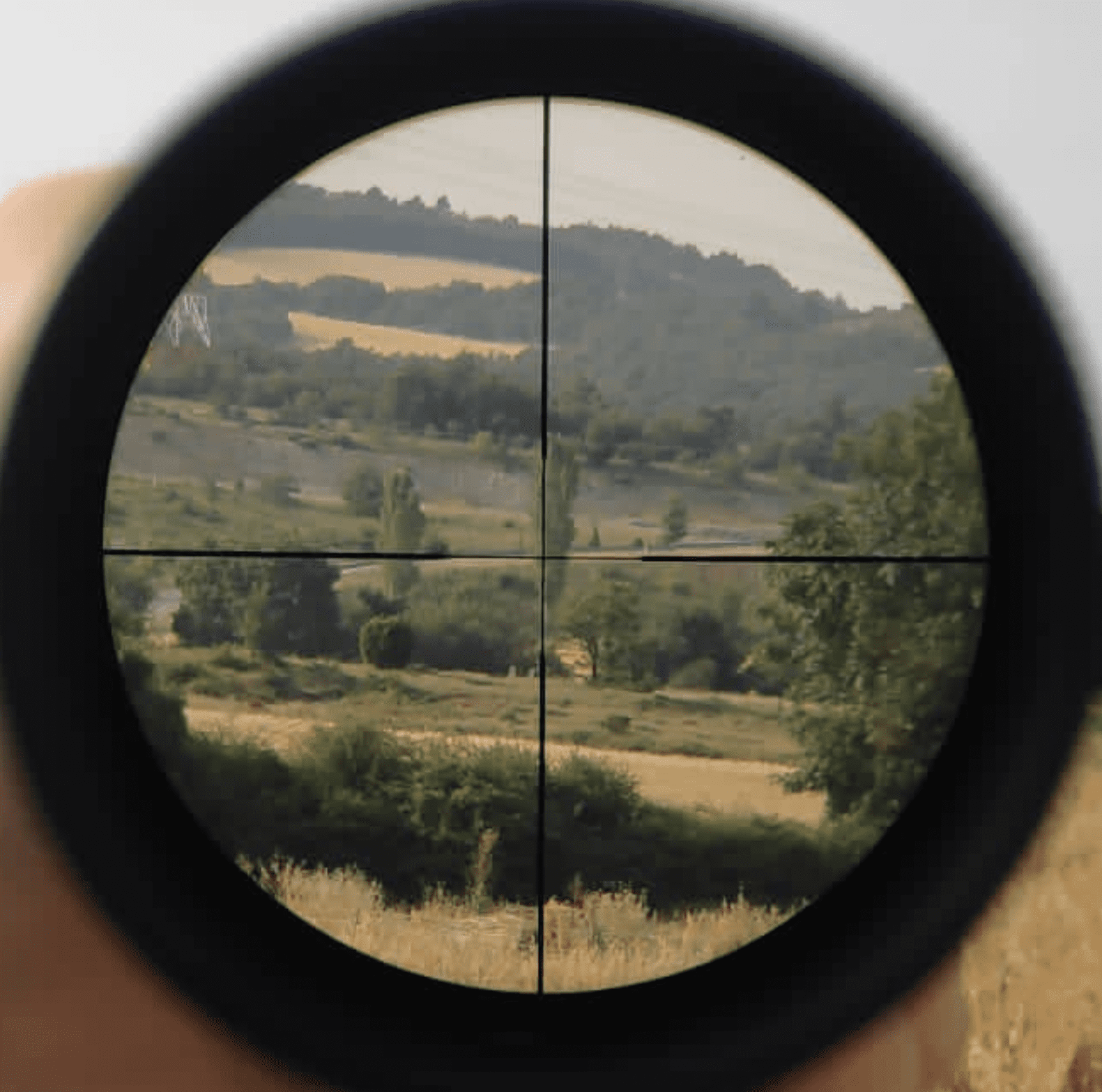
Magnification & Parallax
The 3-15x range strikes an ideal balance for hunting. Down at 3x, the field of view is enormous, perfect for jumping a deer in thick woods. At 15x, it offers all the magnification needed to ethically place a shot on a deer or antelope at the 6mm ARC’s effective hunting range. As a Second Focal Plane (SFP) scope, the reticle remains bold and visible at all powers, which I prefer for hunting as it never gets lost against a dark, messy background.
Elevation & Windage Knobs
Leupold’s CDS-ZL2 turret is the best hunting turret system on the market, period. I ordered a custom dial matched to my 103gr ELD-X load. The turret remains locked at zero, so it can’t be bumped off while crawling through brush. When a shot opportunity arises, you push a button, dial the range, and hold dead-on. It’s fast, intuitive, and foolproof. The clicks are intentionally a bit soft, designed for gloved hands, not for counting clicks under pressure. It’s a system designed to prevent error in the field.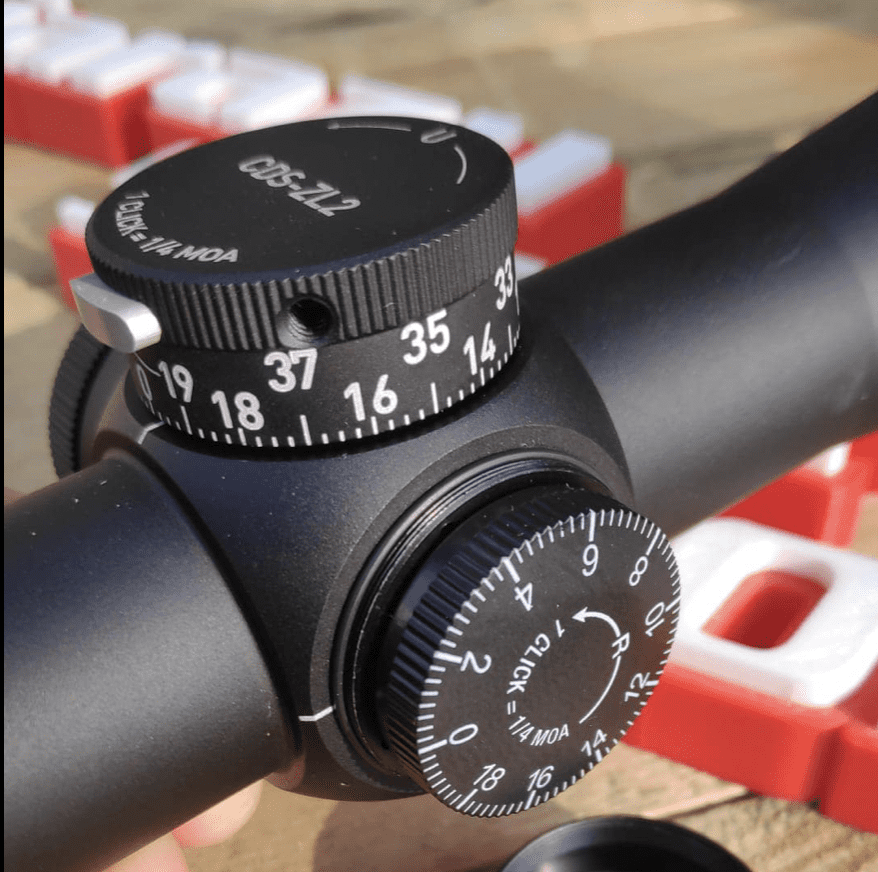
Eye Relief & Eye Box
The eye relief on the VX-5HD is generous, but the real star is the incredibly forgiving eye box. During testing, I practiced shouldering the rifle quickly for snap shots. No matter how sloppy my cheek weld was, I could instantly get a full, usable sight picture. This is a massive advantage when a buck appears suddenly and you have only seconds to get on target. At almost half a pound lighter than the tactical scopes, it also made the rifle a joy to carry all day.
Durability
Don’t let the light weight fool you; this scope is tough. It’s built to the same standards as Leupold’s tactical optics. I took a hard fall on a slick, mossy hillside, and the scope, though caked in mud, was completely unfazed and held its zero perfectly. After a full day in freezing rain, there was no hint of internal fogging. It’s a scope built to survive the realities of hard hunting, backed by Leupold’s lifetime guarantee.
How It Really Performs
Optical Quality (29/30): The king of low-light performance. The brightness, color, and clarity are truly top-tier.
Durability (22/25): Remarkably tough for its light weight. Passed all drop and weather tests with ease.
Usability (19/20): The CDS-ZL2 turret and forgiving eye box make it arguably the most user-friendly hunting scope available.
Value (13/15): It’s a premium investment, but it delivers performance and features that justify the cost for a serious hunter.
Features (8/10): Boasts industry-leading lens coatings and an exceptional turret system, but its SFP reticle is a drawback for tactical shooters.
See how I test and rate scopes. Learn more
Overall Performance Score: 91/100
Perfect for: The hunter who values low-light performance, lightweight handling, and a simple, effective dialing system above all else. It’s the ideal choice to make a 6mm ARC a fast, modern hunting machine.
Skip it if: You are a competition shooter who needs a first focal plane reticle for complex holdovers or if you are on a strict budget.
Choosing the Right Scope for Your 6mm ARC
Selecting the right optic for a 6mm ARC rifle is about defining the rifle’s primary mission. This versatile cartridge can be a 1,000-yard steel ringer one day and a lightweight deer rifle the next. The scope you choose will channel its personality and either enhance or hinder its capabilities for your chosen task.
Weight and Balance: The AR-15 vs. Bolt-Action Question
The first consideration is your rifle platform. On a lightweight AR-15 or a compact bolt-action, a heavy scope can make the rifle feel top-heavy and clumsy. A scope like the Leupold VX-5HD, at under 20 ounces, keeps the package nimble and fast-handling, which is ideal for hunting or dynamic shooting. For a heavier, bench-rest or prone-focused build, a more substantial scope like the Vortex PST or Nightforce NX8 is a better fit, as their mass helps add stability and their features are geared toward deliberate, long-range shooting.
First vs. Second Focal Plane (FFP vs. SFP)
This is the most significant decision you’ll make. Two scopes here (Vortex, Nightforce) are First Focal Plane (FFP), where the reticle’s subtensions are accurate at any magnification. This is a must-have for competition shooters or anyone who uses hashmarks for wind and elevation holds. The Leupold is a Second Focal Plane (SFP) scope, where the reticle size is fixed. The advantage is a bold, easy-to-see aiming point at all magnifications, which is often preferred by hunters who want a simple, fast sight picture. If you intend to dial your turret for elevation and only use the reticle as a center crosshair, SFP is perfectly adequate and often superior in cluttered environments.
Matching Magnification to Your Mission
More magnification is not always better. A 3-15x range, found on the Vortex and Leupold, is the modern “sweet spot” for a rifle as versatile as the 6mm ARC. It offers a wide field of view on the low end for close or moving targets and enough power for shots out to 800 yards or more. The massive 4-32x range of the Nightforce is a specialist’s tool. It’s for the shooter whose primary goal is precision at extreme distances, where the extra magnification is needed to see small targets and spot impacts. For a general-purpose or hunting rifle, that much power is often unnecessary and comes with trade-offs like a tighter eye box.
Turrets: To Dial or Not to Dial?
How do you plan to correct for bullet drop? If you are a “dialer” who wants to spin turrets for precise elevation adjustments, you need exposed, tactical-style turrets with a reliable zero-stop, like those on the Vortex and Nightforce. They are designed for constant and repeatable use. If you are a “set-it-and-forget-it” hunter, a locking, capped, or simplified dial like the Leupold CDS-ZL2 is a better choice. It prevents accidental movement in the field while still giving you the option to make a quick, simple adjustment for a longer-than-expected shot without the complexity of a full tactical turret.
Frequently Asked Questions
What is the best magnification range for a 6mm ARC?
For a do-it-all 6mm ARC, a 3-15x or similar range is ideal. It’s versatile enough for hunting, target shooting, and competition. If you are exclusively focused on long-range precision beyond 800 yards, a scope with a top end of 25x or more, like the Nightforce NX8, becomes a significant advantage.
Is an FFP or SFP scope better for a 6mm ARC?
It depends entirely on your use case. For competition or long-range shooting where you use reticle hashmarks for holds, FFP is mandatory. For most hunting situations where you either hold dead-on or dial your turret for range, an SFP scope with its consistently bold reticle is often faster and easier to use, especially in low light.
Do I need a 30mm tube for a 6mm ARC?
Yes, all three scopes here feature a 30mm tube, and for good reason. The 6mm ARC is a long-range capable cartridge. A 30mm tube provides the necessary internal adjustment range to dial for those distances without needing a heavily canted base. It has become the standard for any serious precision or hunting scope.
How much should I spend on a scope for my 6mm ARC rifle?
The old advice was to spend as much on the glass as you did on the rifle. A better rule is to match the optic’s capability to your intended use. For a high-performance cartridge like the 6mm ARC, plan to spend at least $700 to get a scope with the features (FFP, good turrets) and optical quality needed to unlock the round’s potential. Investing in a premium scope like the ones listed here ensures your optic will never be the limiting factor in your rifle system’s performance.
Disclosure
My commitment is to you, the reader. To maintain complete objectivity, I purchased every scope in this guide at retail price through standard commercial channels. I do not accept free products, sponsorships, or paid placements from any manufacturers. My recommendations are based solely on the results of my independent, hands-on field testing. This guide may contain affiliate links, which means I may earn a small commission if you make a purchase through them, at no extra cost to you. This helps support the significant time and expense involved in creating in-depth, unbiased reviews like this one. My reputation is built on trust, and I will never compromise that for a commission.
Final Thoughts
The 6mm ARC is a remarkable cartridge that demands a high-quality optic to realize its potential. It’s a bridge between the tactical and hunting worlds, and the scope you choose will ultimately define its role. Any of the three scopes in this guide represents the pinnacle of performance in its respective category. For the specialist pushing the ballistic frontier, the Nightforce NX8 is a peerless tool. For the modern hunter, the Leupold VX-5HD offers an unbeatable combination of lightweight handling and low-light dominance. But for the shooter who wants one scope that can do it all—compete, hunt, and train—with an intelligent feature set that punches far above its price, the Vortex Viper PST Gen II is the clear and decisive winner. It’s the most versatile and capable partner for this exceptional cartridge.

Hi, I am Jerry L. Miculek and I am experienced firearms and optics expert. Guns are not just a hobby for me, they are my passion and life. You can learn more about me on my About page.